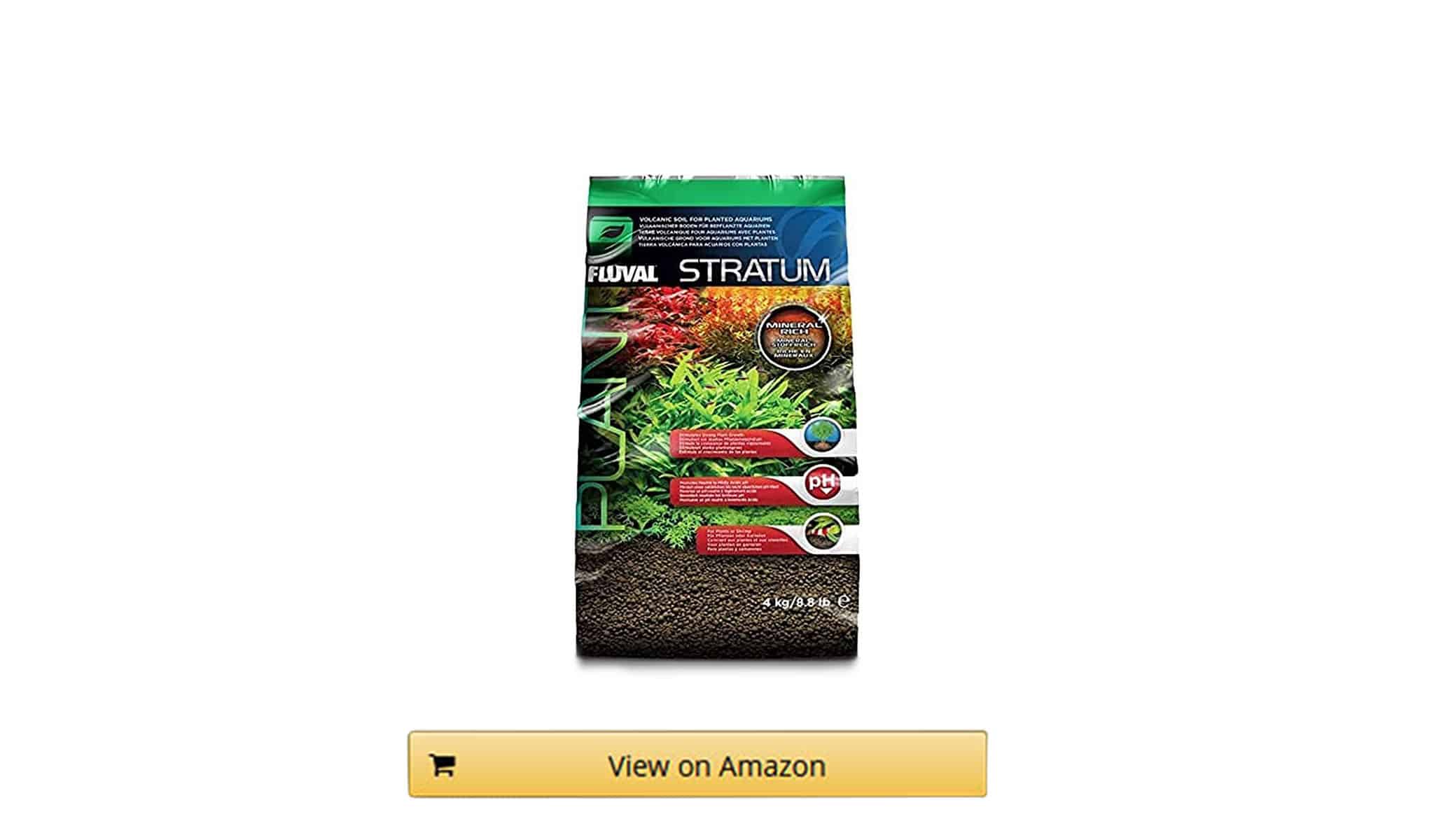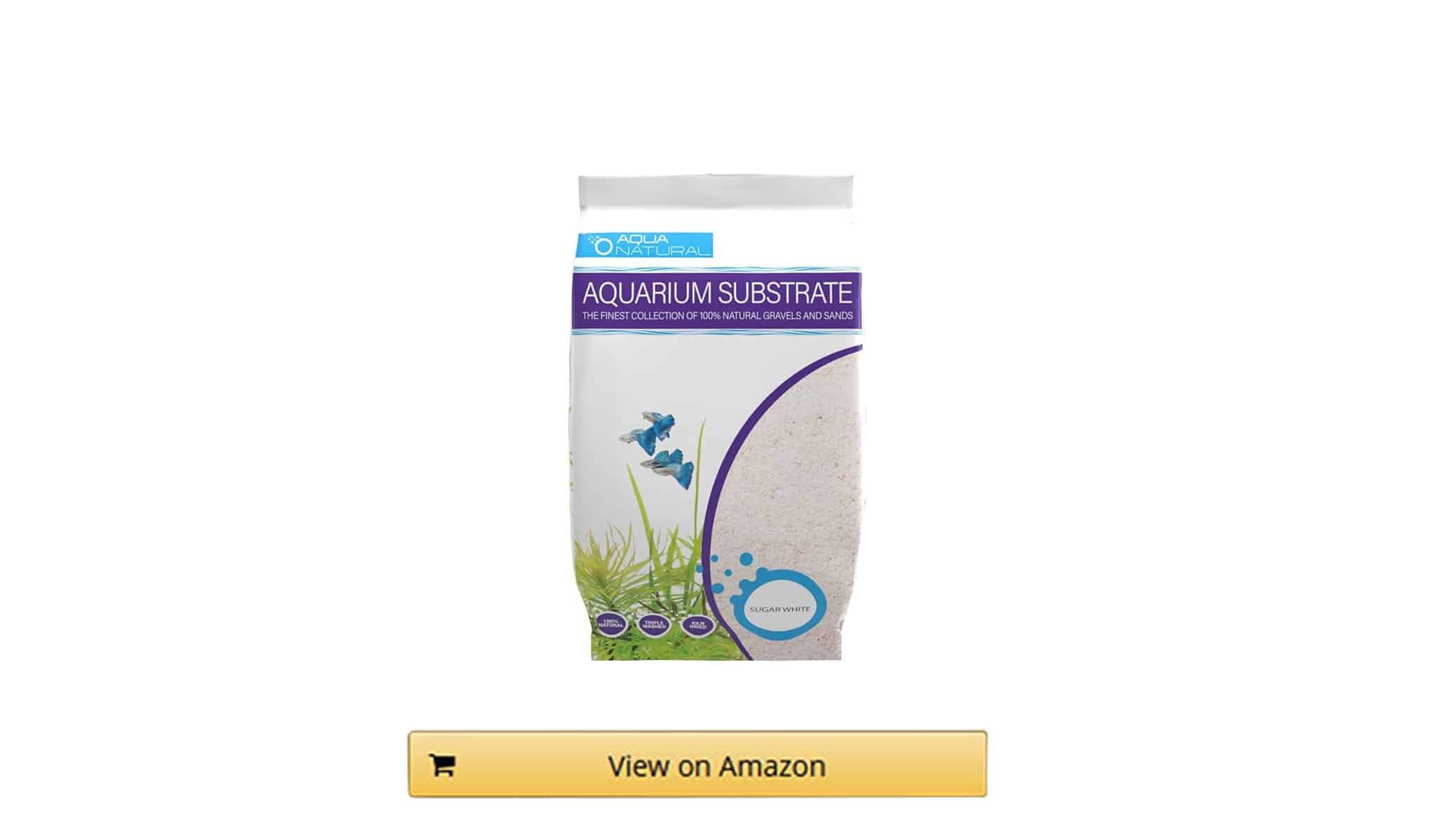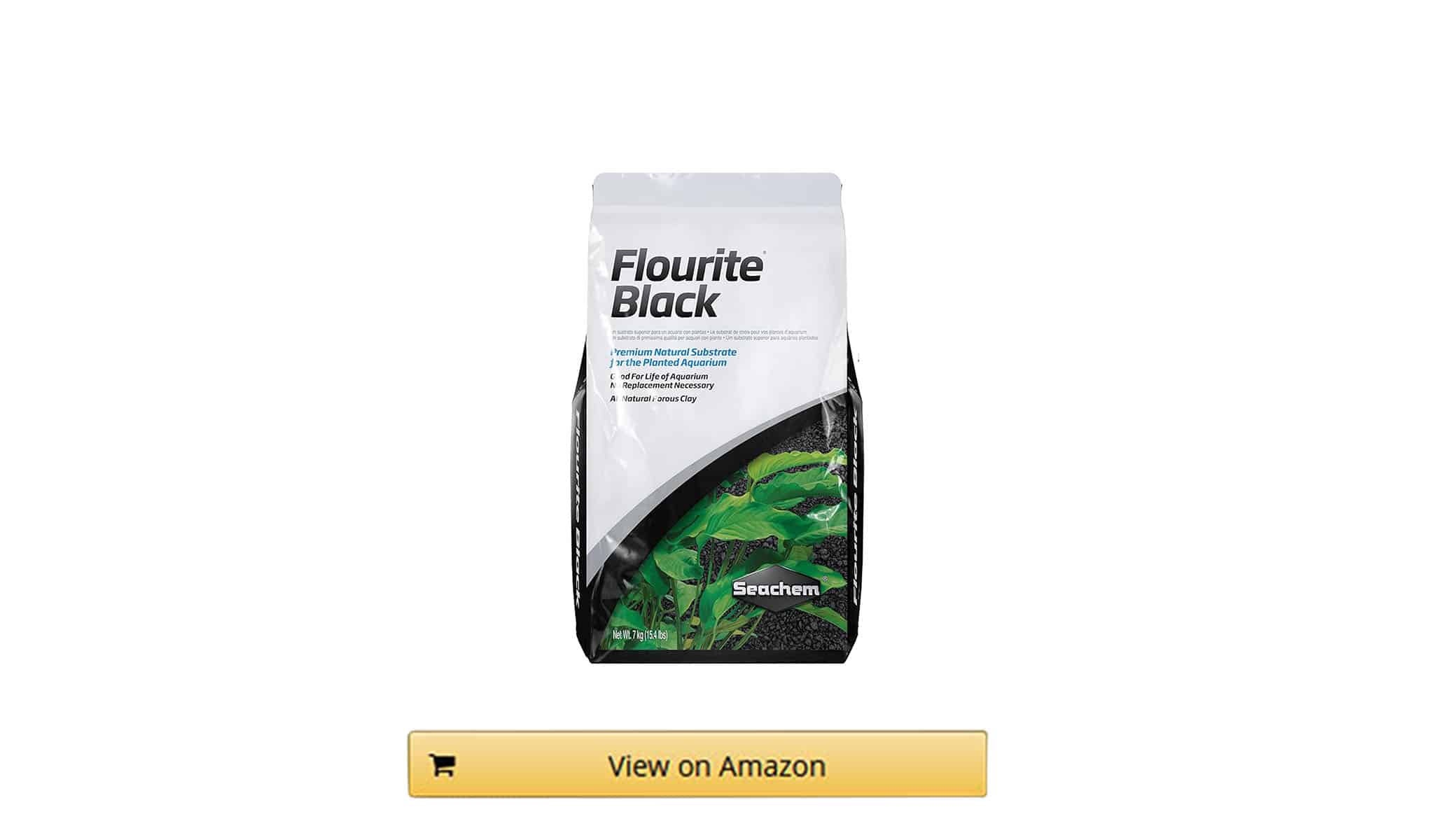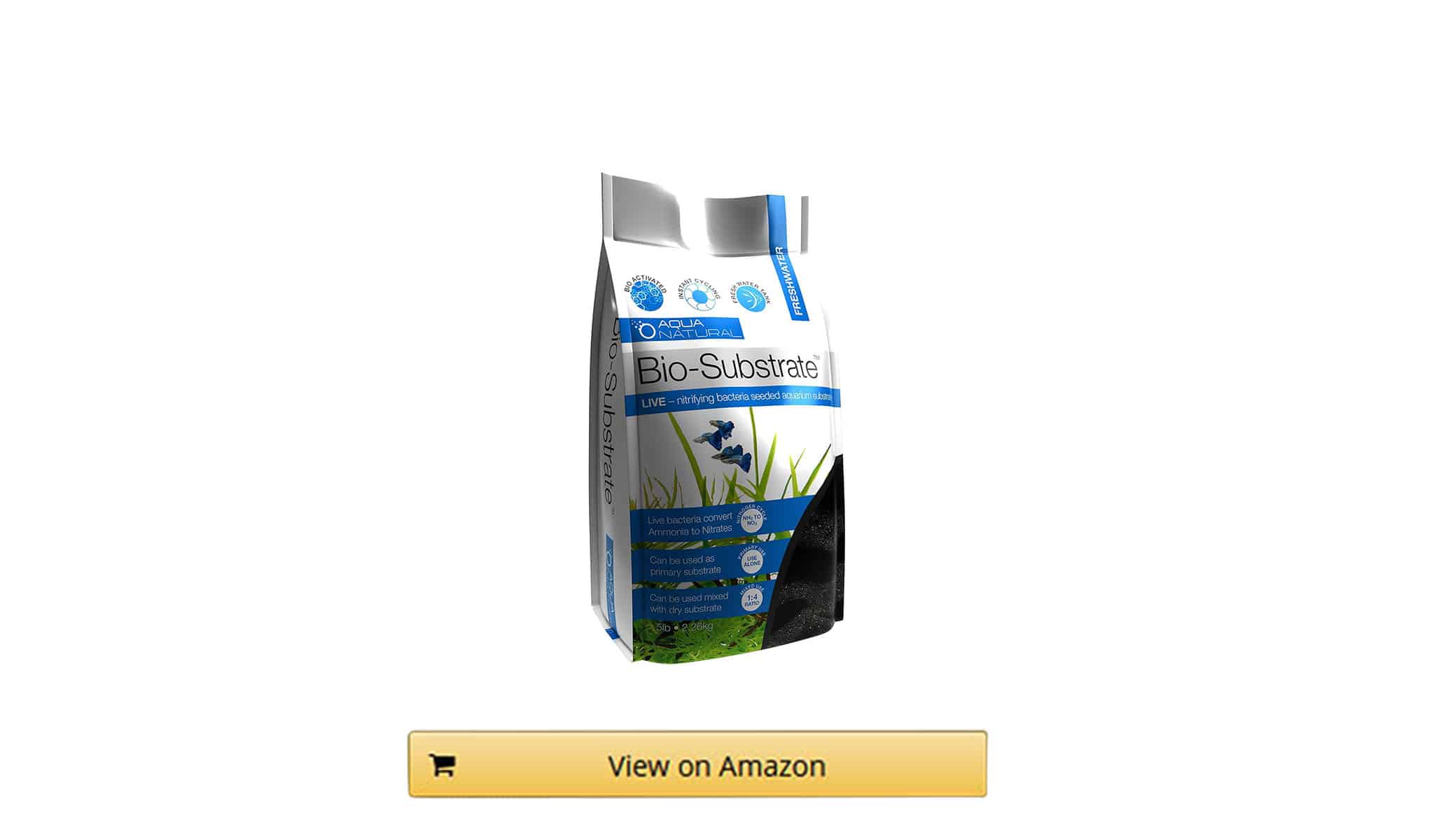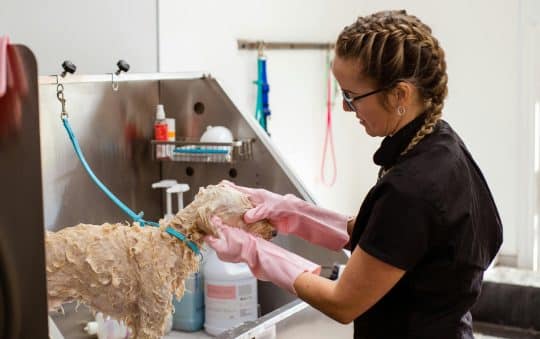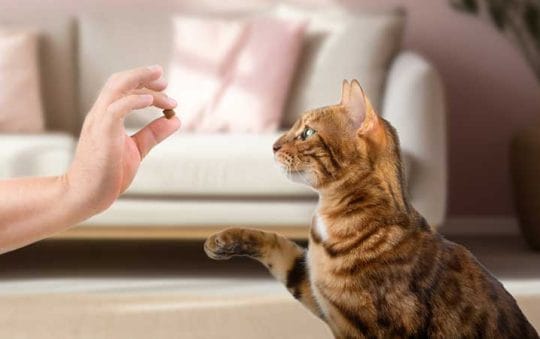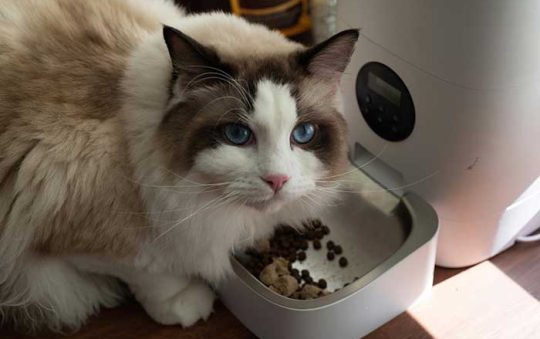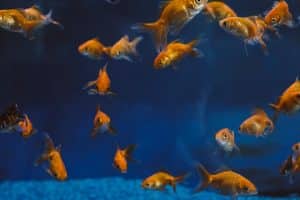 Finding the best aquarium gravel is essential for creating a thriving underwater ecosystem for your finned friends. The right substrate not only enhances the visual appeal of your aquarium but also plays a crucial role in supporting beneficial bacteria, plant growth, and overall water quality. In this comprehensive guide, we’ll explore five exceptional aquarium gravel options that stand out in the market for their quality, functionality, and aesthetic appeal.
Finding the best aquarium gravel is essential for creating a thriving underwater ecosystem for your finned friends. The right substrate not only enhances the visual appeal of your aquarium but also plays a crucial role in supporting beneficial bacteria, plant growth, and overall water quality. In this comprehensive guide, we’ll explore five exceptional aquarium gravel options that stand out in the market for their quality, functionality, and aesthetic appeal.
Before diving into individual reviews, it’s important to understand that choosing the best aquarium gravel requires considering several factors. These include your tank size, the types of fish and plants you keep, and your specific aesthetic preferences. Furthermore, the best aquarium gravel should balance functionality with visual appeal, providing both a healthy environment for your aquatic creatures and an attractive base for your underwater landscape.
Without further ado, let’s explore these outstanding aquarium gravel options that have garnered praise from the aquarium community. Each product has been thoroughly evaluated based on its performance, ease of maintenance, durability, and overall value for money. Whether you’re a seasoned aquarist or just beginning your aquatic journey, this guide will help you find the best aquarium gravel for your unique setup.
How We Selected the Best Aquarium Gravel
Our selection process for the best aquarium gravel was extremely thorough and methodical. We examined numerous factors to ensure that only truly outstanding products made it to our final list. First and foremost, we focused on substrate quality and composition – after all, the primary purpose of the best aquarium gravel is to provide a healthy foundation for your aquatic ecosystem.
We carefully evaluated each gravel option for its impact on water chemistry, as certain substrates can alter pH levels or hardness. This is particularly important because different aquatic species thrive in specific water conditions. Additionally, we assessed the grain size and texture of each substrate, considering how these factors might affect both the comfort of bottom-dwelling fish and the ability of plants to establish strong root systems.
Plant compatibility was another key consideration in our evaluation process. For planted tanks, we looked for substrates that provide essential nutrients or effectively retain added fertilizers. The best aquarium gravel should support robust plant growth while maintaining clear water conditions. We also examined how each substrate performed in terms of debris management – some gravels are better at allowing waste to settle where it can be easily removed during maintenance.
Ease of cleaning played a significant role in our selection process as well. We prioritized substrates that don’t compact too tightly, making them easier to vacuum during routine tank maintenance. Furthermore, we considered the longevity of each product, as the best aquarium gravel should maintain its appearance and functionality for years without breaking down or releasing unwanted compounds.
User feedback was instrumental in forming our recommendations. We analyzed countless reviews from hobbyists with various experience levels, taking note of both praise and criticism to develop a well-rounded understanding of each product’s performance in real-world settings. Lastly, we evaluated the overall value proposition of each option, because while we believe in investing in quality materials, we also understand the importance of getting good value when selecting the best aquarium gravel for your setup.
Our selection criteria included:
- Water chemistry impact and stability
- Grain size and texture appropriateness
- Plant compatibility and nutrient content
- Debris management capabilities
- Ease of cleaning and maintenance
- Aesthetic appearance and color retention
- Durability and longevity
- Value for money
Through this comprehensive evaluation process, we’ve identified five standout options that represent the best aquarium gravel available in 2025.
A Spotlight On Some of The Best Aquarium Gravel 2025:
Fluval Stratum Aquarium Gravel
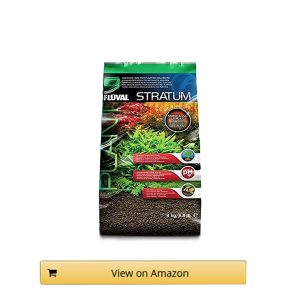
One of the standout features of this best aquarium gravel is its porous structure. This innovative composition significantly enhances biological filtration by providing an extensive surface area for beneficial bacteria to colonize. Consequently, this not only helps maintain stable water parameters but also creates a healthier environment for your aquatic pets by promoting efficient nitrogen cycle processing.
Furthermore, Fluval Stratum boasts excellent plant-supporting properties that set it apart from conventional gravel options. The substrate contains natural minerals and nutrients that promote robust root growth and plant development. Unlike many competing products, it’s specifically formulated to provide a light, non-compacting bed that allows plant roots to easily penetrate and establish themselves. The result? Lush, thriving aquatic plants that contribute to a more balanced and visually stunning aquarium ecosystem.
Ease of maintenance is another area where this best aquarium gravel shines. The dark, natural appearance of Fluval Stratum not only looks attractive but also helps hide debris and detritus until your next maintenance session. Additionally, its light weight makes it easy to work with during initial setup, allowing for precise aquascaping and creative arrangements.
However, it’s worth noting that all this specialized performance comes with specific care requirements. Fluval Stratum can be somewhat delicate compared to traditional gravel, and aggressive vacuuming can break down the particles over time. Nevertheless, many users find that the superior plant growth and water quality benefits justify the gentler maintenance approach required.
In terms of water chemistry, Fluval Stratum gently lowers and stabilizes pH, making it an excellent choice for keeping tropical fish and shrimp that prefer slightly acidic conditions. This natural buffering capacity helps maintain consistent water parameters, which is crucial for sensitive species that might be stressed by fluctuations. This feature makes it particularly popular among shrimp keepers, especially those working with Caridina species that thrive in softer, more acidic water.
Aesthetically, the dark brown to black coloration of this best aquarium gravel provides a natural-looking substrate that mimics the bottom of streams and rivers. This rich backdrop makes fish colors pop and creates a striking contrast with green plants and decorative elements. The uniform size of the particles further contributes to its polished, professional appearance.
Lastly, the durability of Fluval Stratum is impressive when maintained correctly. While it may gradually break down over time (typically 1-2 years), it continues to provide benefits throughout its lifespan. Many aquarists consider it a worthwhile investment that significantly contributes to the overall health and beauty of their aquatic displays.
Pros:
- Excellent for plant growth with natural nutrients
- Porous structure enhances biological filtration
- Naturally buffers pH for stable water parameters
- Ideal for shrimp keeping and breeding
- Attractive natural appearance
- Lightweight and easy to work with during setup
Cons:
- Requires gentle maintenance to prevent breakdown
- May cloud water initially if not rinsed properly
Aqua Natural Aquarium Sand
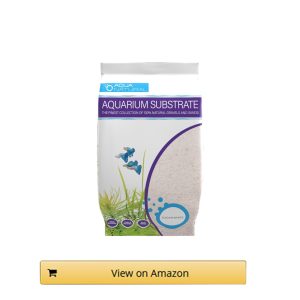
At the heart of this best aquarium gravel substitute’s appeal is its remarkably natural appearance. The sand comes in a pleasing neutral tan color that closely resembles the natural substrate found in many riverbeds, beaches, and lake bottoms. This authentic look provides an excellent foundation for creating biotope aquariums that accurately mimic natural habitats. Moreover, the consistent grain size creates a uniform, polished appearance that enhances the overall visual impact of your aquascape.
In terms of practicality, Aqua Natural Sand offers significant benefits for certain fish species, particularly those that enjoy digging, sifting, or foraging in substrate. Bottom dwellers like corydoras catfish, certain cichlids, and various loaches greatly appreciate the smooth texture that won’t damage their sensitive barbels or scales. Additionally, the fine grain size is ideal for burrowing creatures like Malaysian trumpet snails and certain freshwater clams, allowing them to move through the substrate naturally without injury.
One of the standout characteristics of this best aquarium gravel alternative is its pre-washed and pH-neutral formulation. Unlike some competing sand products that can dramatically alter water chemistry, Aqua Natural is specifically processed to maintain stable water parameters. This feature makes it particularly valuable for aquarists keeping sensitive species that require consistent conditions. Furthermore, the thorough pre-washing means significantly less prep work before adding it to your tank, though a quick rinse is still recommended.
Plant compatibility is another area where this substrate performs admirably. While not specifically designed as a plant substrate, many rooted plants can successfully establish themselves in Aqua Natural Sand, especially when supplemented with root tabs for nutrition. Species like Amazon swords, cryptocorynes, and various stem plants can thrive in this medium with proper care. The fine texture allows roots to penetrate easily while providing adequate anchoring support.
The maintenance requirements of this best aquarium gravel alternative deserve special consideration. The fine particle size means that debris tends to sit on top rather than sinking between grains, making it visually obvious when cleaning is needed. However, this same quality means that waste is easier to remove during water changes, as it can be gently siphoned from the surface without disturbing the sand bed deeply. Nevertheless, proper maintenance technique is important, as aggressive vacuuming can easily suck up the sand itself.
It’s worth noting that while Aqua Natural Sand offers many benefits, it does have some specific considerations. The fine texture can potentially be drawn into filter intakes, so suitable guards or raised intake tubes are recommended. Additionally, proper cleaning before installation is essential to prevent clouding, though this product requires less rinsing than many competing sands.
Longevity is a strong point for this substrate. Unlike some planted aquarium substrates that break down over time, Aqua Natural Sand remains stable for the life of your aquarium. This permanence makes it a one-time investment that continues to perform year after year, representing excellent long-term value.
Pros:
- Natural appearance ideal for biotope aquascapes
- Gentle on bottom-dwelling fish and invertebrates
- pH neutral formulation that won’t alter water chemistry
- Pre-washed to reduce preparation time
- Compatible with many aquatic plants when supplemented
- Long-lasting and stable substrate
Cons:
- Can potentially be drawn into filter intakes
- Requires careful technique when cleaning
Seachem Flourite Black Clay Gravel
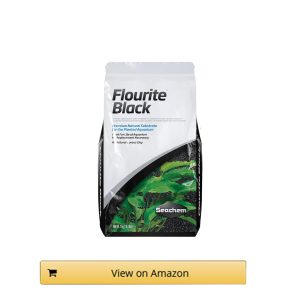
One of the most impressive features of this best aquarium gravel is its remarkable longevity. Seachem Flourite is manufactured from stable, natural clay material that’s specifically fired to create a porous yet durable substrate. Unlike some plant-focused substrates that deplete over time, Flourite maintains its structure and beneficial properties indefinitely. This permanent nature means it never needs to be replaced, representing an excellent long-term investment for serious aquarists who want to maintain their planted tanks for years without substrate replacement.
The filtration capabilities of Seachem Flourite are particularly noteworthy. Its highly porous structure provides an enormous surface area for beneficial bacteria colonization, significantly enhancing biological filtration in your aquarium. This quality helps maintain stable nitrogen cycling and contributes to better overall water quality. Additionally, the varied particle size creates small spaces within the substrate bed that promote healthy water flow and prevent anaerobic dead zones that could lead to harmful gas buildup.
For plant enthusiasts, this best aquarium gravel offers exceptional root support. The substantial weight and irregular texture of Flourite particles make it excellent for anchoring even large aquatic plants with extensive root systems. Plants can easily establish themselves and develop robust root structures that enhance nutrient uptake and overall health. Moreover, while Flourite doesn’t contain added fertilizers, its unique chemical structure excels at binding and storing nutrients from water column fertilizers and root tabs, making them available to plant roots when needed.
The aesthetic appeal of Seachem Flourite Black contributes significantly to its popularity. The deep, rich black coloration provides a striking contrast against green plant foliage and brightly colored fish. This dramatic backdrop can transform an ordinary planted tank into a visually stunning display where colors appear more vibrant and defined. The natural appearance also lends itself well to creating natural-looking aquascapes that mimic wild habitats.
Initial setup is perhaps the most challenging aspect of working with this best aquarium gravel. Flourite requires extremely thorough rinsing before use to remove the fine clay dust that naturally occurs in the product. Even with proper preparation, some temporary clouding is common during initial filling. However, most aquarists find that this one-time inconvenience is well worth the long-term benefits the substrate provides.
Maintenance of an established Flourite substrate bed is relatively straightforward. The substantial weight of the particles prevents them from being easily disturbed during regular tank maintenance. This stability means you can vacuum the surface to remove debris without significant substrate disruption. Additionally, the dark coloration helps mask the appearance of natural detritus between cleaning sessions, keeping your aquarium looking attractive with less frequent maintenance.
It’s worth noting that while Seachem Flourite Black is primarily designed for planted aquariums, it’s equally suitable for fish-only setups where its excellent biological filtration properties and attractive appearance are still valuable assets. The smooth-edged particles are also relatively gentle on bottom-dwelling species that interact with the substrate.
Pros:
- Permanent substrate that never needs replacement
- Excellent nutrient storage capacity for plant roots
- Superior biological filtration capabilities
- Provides strong anchoring for aquatic plants
- Attractive black coloration enhances visual appeal
- Suitable for both planted and fish-only aquariums
Cons:
- Requires extensive rinsing before use
- Initial clouding is common even with thorough preparation
- Higher price point than basic aquarium gravels
Imagitarium Aquarium Gravel
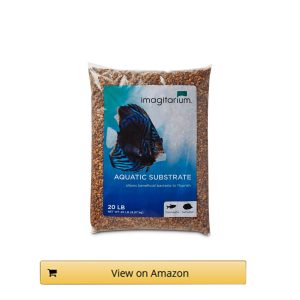
One of the most compelling features of this best aquarium gravel is its remarkable variety of color options. Imagitarium offers an impressive range of vivid hues including classic natural tones, bright primary colors, and even glow-in-the-dark varieties. This extensive selection allows aquarists to create custom color schemes that complement their décor, highlight specific features, or create thematic displays. The colors are permanently bonded to the gravel through a special process, ensuring they remain vibrant over time without leaching into the water or fading quickly.
In terms of practicality, Imagitarium gravel features a consistent medium-sized particle structure that strikes an excellent balance between functionality and appearance. The gravel pieces are large enough to prevent being easily stirred up during water changes or filter operation, yet small enough to create a natural-looking substrate bed. Furthermore, the rounded, smooth-edged nature of the particles makes this substrate particularly suitable for bottom-dwelling fish species that dig or sift through the substrate, reducing the risk of injury to their sensitive barbels or scales.
Maintenance of this best aquarium gravel is notably straightforward. The smooth surface of each particle prevents debris from becoming deeply embedded, allowing waste to sit primarily on top where it can be easily removed during routine cleaning. Additionally, the substantial weight of the gravel helps it stay in place during siphoning, making tank maintenance less disruptive to your carefully designed aquascape. The durable epoxy coating also means that colors won’t wear off even with regular vacuuming.
For community tanks and most common fish species, Imagitarium gravel provides an ideal habitat foundation. The spaces between particles allow beneficial bacteria to colonize, contributing to effective biological filtration. This porous quality helps process waste products and maintains water quality between water changes. Moreover, the inert nature of the coated gravel ensures it won’t alter water chemistry, making it suitable for a wide range of freshwater species with different parameter requirements.
While primarily designed for ornamental purposes, this best aquarium gravel can still support basic plant growth when used with root tabs or liquid fertilizers. Hardy species like Anubias, Java fern, and various floating plants can thrive in tanks with this substrate. The weight of the gravel provides adequate anchoring for most common aquarium plants, though specialized plant substrates might be preferable for heavily planted displays or more demanding species.
For beginning aquarists, one particular advantage of Imagitarium gravel is its ready availability and pre-washed preparation. The product requires minimal rinsing before use, making setup faster and less messy than many alternatives. This convenience factor, combined with its reasonable price point, makes it an accessible option for those just starting in the hobby or setting up multiple tanks.
It’s worth noting that while Imagitarium offers many benefits as a decorative substrate, it doesn’t provide the specialized nutrient content of dedicated plant substrates. However, this limitation is easily addressed through supplemental fertilization for those keeping plants. Additionally, the wide color selection allows for creative mixing and matching to create unique substrate patterns and designs that aren’t possible with natural substrates.
Pros:
- Extensive color options for creative aquascaping
- Consistent medium-sized particles for stable substrate beds
- Smooth, rounded edges safe for bottom-dwelling species
- Easy maintenance with good debris visibility
- Minimal preparation required before use
- Color-fast coating that maintains appearance over time
Cons:
- Limited nutritional value for planted aquariums
- Artificial appearance may not suit naturalistic aquascapes
Aqua Natural Galaxy Sand Bio-Substrate
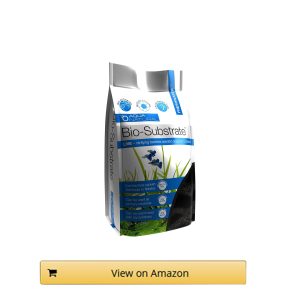
The most immediately striking feature of this best aquarium gravel alternative is its captivating visual appearance. Galaxy Sand features a mesmerizing blend of multiple colored particles that create a cosmic, starry-night effect in your aquarium. The gentle shimmer and varied hues create depth and visual interest that standard monochrome substrates simply cannot match. Under aquarium lighting, this substrate takes on an almost three-dimensional quality that serves as a stunning backdrop for fish, plants, and decorative elements.
From a functional perspective, the bio-active properties of Galaxy Sand set it apart from conventional aquarium substrates. The product is specially formulated with beneficial bacteria cultures and natural minerals that jump-start the nitrogen cycle in new tanks. This innovative approach can significantly reduce cycling time, allowing for faster, safer introduction of fish to a new setup. Furthermore, the ongoing biological activity helps maintain stable water parameters by efficiently processing waste products and reducing harmful ammonia and nitrite spikes.
Grain size and texture have been carefully calibrated in this best aquarium gravel alternative to balance aesthetic and practical considerations. The fine-to-medium particles are small enough to create a natural-looking bed but substantial enough to resist being easily disturbed by filter currents or active fish. This thoughtful sizing also prevents the substrate from becoming compacted over time, allowing beneficial water flow through the substrate layer and preventing the development of anaerobic pockets that could release harmful gases.
For aquarists keeping sensitive bottom-dwelling species, Galaxy Sand offers significant advantages. The smooth-edged particles are gentle on species like loaches, corydoras catfish, and certain cichlids that frequently interact with the substrate. Additionally, the varied texture provides these fish with stimulating foraging opportunities that more closely mimic their natural environment, potentially encouraging more natural behaviors and reducing stress.
Plant compatibility is another area where this best aquarium gravel alternative performs admirably. While not specifically designed as a nutrient-rich plant substrate, Galaxy Sand provides excellent anchorage for root systems while allowing easy nutrient flow. When supplemented with root tabs or liquid fertilizers, it can support a wide variety of aquatic plants, from simple beginner species to more demanding specimens. The mixed particle size creates small pockets that help hold root feeders securely in place, even in tanks with more active fish species.
Maintenance of Galaxy Sand requires some specific considerations to preserve its unique appearance and functional benefits. The varied particle size means that debris can sometimes settle between grains, requiring careful cleaning techniques during water changes. A gentle hover-vacuum approach works best to remove waste without disturbing the arrangement of the substrate. However, this careful maintenance is rewarded with a substrate that maintains its striking appearance longer than many alternatives.
It’s worth noting that while Galaxy Sand’s bio-active properties provide significant advantages for cycling and stability, it’s still important to follow proper aquarium establishment procedures. Regular water testing remains essential, particularly during the initial setup period. Additionally, while the substrate is formulated to be pH-neutral, it’s always advisable to monitor water parameters when introducing any new substrate to ensure compatibility with your specific livestock.
Pros:
- Unique multi-colored appearance creates visual depth
- Bio-active formula accelerates nitrogen cycle establishment
- Gentle texture suitable for sensitive bottom-dwellers
- Balanced grain size prevents compaction
- Provides good anchoring for aquatic plants
- pH-neutral formulation safe for most freshwater species
Cons:
- Requires specific cleaning techniques to maintain appearance
- Premium price point compared to basic substrates
Best Aquarium Gravel Buying Guide
When searching for the best aquarium gravel for your setup, it’s essential to consider several key factors to ensure you select the option that will best support your aquatic ecosystem. Here’s a comprehensive guide to help you make an informed decision:
Tank Type and Inhabitants
The type of aquarium you’re maintaining should significantly influence your substrate choice. Different aquatic environments and species have specific substrate requirements:
For community freshwater tanks, versatile options like medium-sized natural gravel or sand often work well. However, if you’re keeping bottom-dwelling species that sift through substrate or have sensitive barbels (like Corydoras catfish), smooth-edged sand or fine gravel is preferable to prevent injury.
Cichlid tanks, particularly those housing African cichlids from Lake Malawi or Tanganyika, benefit from crushed coral or aragonite substrates that help buffer and maintain the higher pH these fish require. Conversely, South American cichlids and blackwater species often prefer darker, inert substrates that won’t affect water chemistry.
In planted aquariums, specialized nutrient-rich substrates or layered approaches often yield the best results. Plants with extensive root systems particularly benefit from deeper substrates containing essential nutrients and minerals.
Substrate Size and Texture
The size and texture of your chosen substrate affect both aesthetics and functionality:
Fine sand (0.1-1mm) creates a natural-looking bed that’s excellent for burrowing species but can potentially compact over time and may require more careful maintenance to prevent anaerobic pockets.
Medium gravel (2-5mm) strikes a balance between appearance and functionality, allowing waste to fall between particles while remaining easy to vacuum without significant disruption.
Large gravel (5-10mm) creates more pronounced visual texture and substantial water flow through the substrate bed but may trap larger debris pieces and can be more difficult for some plants to root in.
Remember that the best aquarium gravel size also depends on your filtration system. Very fine substrates can potentially be drawn into filters with powerful intake flow, so appropriate guards or adjustments might be necessary.
Impact on Water Chemistry
Different substrate materials can significantly influence your water parameters:
Inert substrates like quartz gravel, slate, and most commercial colored gravels won’t alter water chemistry, making them versatile choices for most community tanks.
Active substrates containing calcium carbonate (like crushed coral, aragonite, or limestone) will gradually dissolve in water, raising hardness and pH. These are excellent for African cichlids and brackish setups but unsuitable for species requiring soft, acidic water.
Plant-focused substrates often contain minerals and nutrients that may temporarily influence water parameters during the initial setup. Some specialized clay-based substrates can slightly lower pH, benefiting many tropical species and plants.
Maintenance Requirements
Consider how your substrate choice will affect your regular tank maintenance routine:
Darker substrates tend to hide debris better between cleanings, maintaining a cleaner appearance but potentially making it harder to gauge when vacuuming is needed.
Larger particle sizes allow waste to fall between gaps, keeping the visible surface cleaner but potentially trapping detritus within the substrate bed.
Some specialized plant substrates require gentler maintenance approaches to prevent breaking down the particles or disturbing established root systems.
Aesthetic Considerations
The visual impact of your substrate choice should complement your overall aquascaping vision:
Natural-colored substrates like tans, browns, and blacks create a more realistic appearance and often make fish colors appear more vibrant through contrast.
Colored gravels offer creative possibilities for themed tanks or specific visual effects but may create a less natural look.
Consider how your substrate will interact with your lighting. Lighter substrates reflect more light, potentially creating a brighter overall appearance but sometimes contributing to increased algae growth.
Plant Compatibility
If you’re keeping live plants, substrate choice becomes even more critical:
Specialized plant substrates containing clay, volcanic soil, or other nutrient-rich materials provide excellent conditions for root feeders like swords, cryptocorynes, and stem plants.
Inert substrates can still support plant growth when supplemented with root tabs and liquid fertilizers but might limit the growth potential of heavy root feeders.
Consider the depth requirements as well – most planted tanks benefit from 2-3 inches of substrate to allow proper root development.
Budget Considerations
Substrate costs can vary dramatically depending on the type and quality:
Basic aquarium gravels tend to be the most economical option, particularly when purchased in bulk.
Specialized plant substrates and bio-active options command premium prices but often provide enhanced functionality that may justify the investment.
Consider long-term value rather than just initial cost. Some premium substrates maintain their properties for the life of the aquarium, while others may need partial replacement over time.
Conclusion
When selecting from our recommended best aquarium gravel options, look for products that match your specific setup needs. It’s essential to choose a substrate that provides effective support for your particular fish species and aquatic plants without requiring excessive maintenance. The best aquarium gravel should be constructed with quality materials to ensure reliable, long-term performance in your tank. Above all, prioritize options that will maintain stable water conditions for your aquatic pets while creating an aesthetically pleasing underwater landscape.
We’d love to hear about your experiences with these gravel options – feel free to share your thoughts in the comments below! Let us know which substrate you chose and how it’s working in your aquarium setup.

